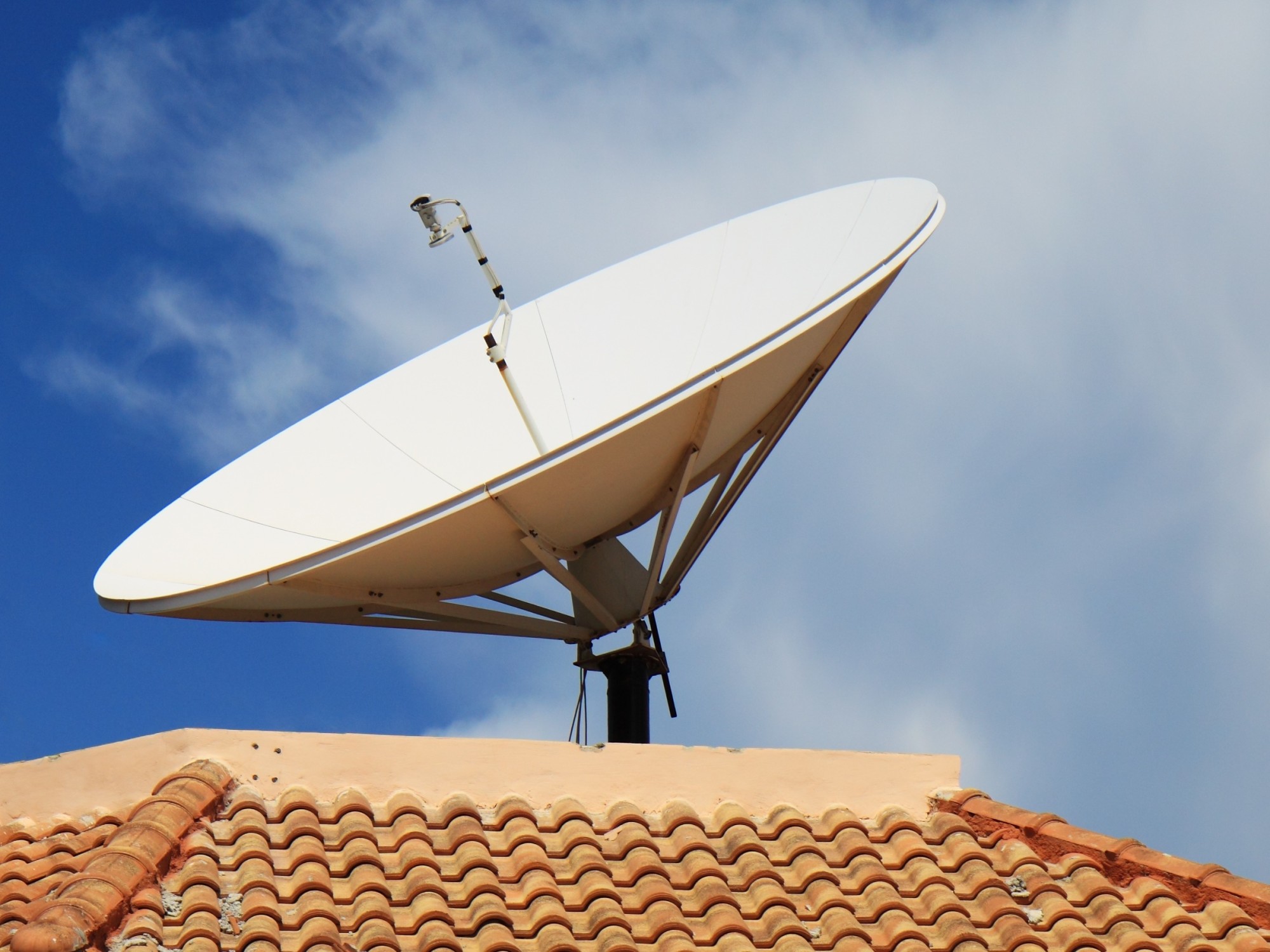If you're in a rural or remote location looking for an internet provider with service in your area, find out if Viasat internet is available near you.
15 May, 2024 | Posted by:
Category: Cable, Deals & Packages, Internet, Service Providers, Streaming, Technology, Tips | No Comments

Approximately six percent of American households lack adequate internet. Never before in time has the internet and reliable communication been as important as it is today.
Viasat Internet has one of the widest reaches of all internet companies, touching every state in the United States. Their accessibility map has every county of every state colored, which means just about anyone can get Viasat.
Keep reading to learn about why Viasat internet is one of the leading internet providers available today.
Viasat differs from other internet services in that it does not use cable or fiberoptic. It uses a satellite network to beam a connection to any household that needs it in any part of the country.
So if you live in a remote area where cable internet or fiber internet is not a possibility, Viasat is a great option. You can live anywhere in the United States from Portland, Oregon to Miami, Florida, and anywhere remote in between.
Rural internet users, in particular, can benefit from Viasat. Those who live on a farm or in any part of rural America understand the difficulty of finding reliable internet. Most rural areas do not have the high concentration that an internet company wants before it invests in bringing internet to homes.
Thus, these rural areas lack the infrastructure to support the internet.
If you're living outside a coverage area that has cable, DSL, fiber, and fixed-wireless options, you're a great candidate for Viasat. So you can enjoy the remote outdoors and modern-day internet service.
Getting Viasat is a pretty simple process. You visit a list of the providers in your area and select Viasat. Then you contact the company directly to see how long before they can send a technician to your home to set up your internet.
Viasat works in remote, rural areas with few people living in them. You do not need an official community of people to get Viasat internet. Plus, Viasat satellite often provides even faster service than some DSL, with some locations receiving up to 100 Mbps.
Viasat does require you to sign a two-year contract when you sign up for their service. They often pair their services with Direct TV, so you can get a bundle, but you need to commit to two years.
Viasat can sometimes deliver higher latency than other internet types, which means you may have a slower speed than cable or fiber optic would offer.
Plus, Viasat internet plans may cost you more than other types of internet.
When you live in a rural, remote area, you need a connection to the outside world. So reliable internet is no longer just a luxury that some can afford, but it is a requirement for living. People need it to work remotely, and, as of late, kids need it to go to school.
Prior to the coronavirus crisis that forced so many people to work from home, forty-three percent of Americans were already logging into work from their home office. Now there are even more people who need good internet for work.
Services like what Viasat internet provides can keep our country connected and save jobs. People can work from just about anywhere if they have a reliable internet connection. Viasat makes this happen.
To learn more about us, take the time to peruse our website. Contact us for the best internet deals available near you.
Are you wondering is HughesNet good? If yes, you should check out our review here to learn more about the positive aspects of this internet service.
22 October, 2024 | Posted by:
Category: Cable, Deals & Packages, Internet, Service Providers, Streaming, Technology | No Comments

HughesNet is a satellite internet service provider that serves customers in all 50 states, even in rural areas where most other providers don't operate. While many people may view the act of choosing a satellite internet provider akin to picking the lesser of two evils, the truth is that satellite internet has improved a lot over the years.
And the fact that all HughesNet plans deliver download speeds of 25 Mbps means that it can be a budget-friendly option for your family. So is HughesNet good? Well, continue reading in order to find out!
Many satellite internet providers tend to change what their plans provide depending on where you live. This how a company like Viasat operates.
However, that's not how it works with HughesNet. With them, you're going to get a download speed of 25 Mbps no matter where you live or what plan you decide to get.
With 25 Mbps, you can comfortably stream YouTube videos and check your email. However, if you play videogames, or have multiple people using the internet at once, you may face some latency issues. This is just the nature of the beast when it comes to satellite internet, unfortunately.
But if you live alone or with one other person in a small home, then HughesNet could definitely deliver satisfying speeds.
HughesNet offers several plans, all of which provide you with a download speed of 25 Mbps. Their cheapest plan affords you 10 GB of data per month for $59.99. Their most expensive plan will cost you $150.00 per month for 50 GB of data.
If you want something in the middle, you can pay $69.99 a month for 20 GB of data or $99.99 a month for a 30 GB plan. Many people find the 20 GB plan to be the most reasonable. While some Viasat plans may be cheaper, they also deliver slower speeds.
Also, Viasat raises the cost of their plans after three months. The cost for HughesNet, on the other hand, remains constant throughout the term.
Another big benefit of using HughesNet is that they offer a Bonus Zone to their customers during overnight hours. Between 2 am and 8 am local time, you get an extra 50 GB of data per month with HughesNet. So if you wanted to, you can have high-quality content buffer overnight, or download HD movies while you sleep, and then interact with it all when you wake up.
There is no single answer to the question, "is Hughesnet good?" It's going to depend on what your options are, what you intend to use your internet for, and how many people are in your household. However, if you're someone who needs the internet for basic activities and you live in a small home, HughesNet can be a great and reliable choice.
Interested in knowing who the best ISPs are in your area? Contact us today and see how we can help you!
CenturyLink Gigabit internet service gives the residents of Seattle, Tacoma, and Bellevue, WA the ability to browse the web at blazing fast speeds.
13 December, 2024 | Posted by:
Category: Cable, Deals & Packages, Internet, Service Providers, Streaming, Technology, Tips | No Comments

In Washington state, there are over 5.7 million internet users. This means that at least 85.7% of the population has a digital presence.
As you can see, the internet is an important part of most of our lives. So if you're moving to Seattle, Tacoma, or Bellevue soon, you'll want to make sure you're connected.
Thankfully, one of the biggest internet service providers (ISPs) around is available in this state: CenturyLink. In fact, they provide fiber optic internet services (CenturyLink Gigabit), which is the speediest internet around.
If you need internet in any of those 3 cities, then keep reading. We'll tell you about CenturyLink, their service area, packages, and more.
CenturyLink is a well-known name in the US. They're a part of both the S&P 500 index and the Fortune 500. This company was first founded in 1930 and today, they serve customers not just in the US, but also Latin America, Asia Pacific, and EMEA.
Like many of the big names in the industry, they don't just have internet services. In addition, they have phone and TV services, which means you can get convenient bundles when you subscribe to them.
Not only do you get this convenience, but you also get great coverage (we'll get into specifics later). For the most part, you can use this ISP in most of the country, besides California and the majority of New England. So as you can guess, you'll receive service in the state of Washington.
If you're wondering, "is CenturyLink available in my area," then chances are, it is.
For DSL, CenturyLink has a coverage rate of 91.0% in Seattle, 92.1% in Tacoma, and 87.7% in Bellevue. This means the following zip codes receive coverage: 98113, 98115, 98117, 98125, 98116, 98107, and 98155.
If you want to get fiber optic internet, then the coverage drops. This is because this type of internet is cutting-edge tech, which means not many areas will have it. In general, only urban areas that are densely populated will have this type of high-speed internet available.
As far as coverage rate goes for fiber optic internet, they are 71.4% for Seattle, 36.5% for Tacoma, and 22.8% for Bellevue. As you can see, you'll have the best chances of getting this type of internet service in Seattle.
When it comes to CenturyLink plans and prices, it's not very complicated. For all internet speeds up to 100 Mbps, you'll pay just $49 per month and you'll have a data cap of 1,024 GB per month. This makes it clear that if you can get 100 Mbps where you live, you should go for it, as you'll be paying the same price as any other lower download speed.
To learn more about CenturyLink internet prices and plans, keep reading. We'll give you a brief overview of each one so you can determine which one's right for you.
The 15 Mbps package is perfect for those of you who don't really use the internet much when you're home. It's also great if you live on your own, as this is the lowest CenturyLink internet speed possible.
For a frame of reference, Netflix says you should have at least 5 Mbps for your internet speed. Considering this basic plan is 3 times that, you'll be fine streaming movies on this connection.
The 20 Mbps plan gives you just slightly higher download speeds than the previous one, which can make a difference if you're bothered about download speeds when watching movies. With this connection, it'll take you about half an hour to download a movie.
This internet speed can be decent enough for most people, even if you're a gamer. However, if there are 2 gamers in the house, you might want to upgrade to 80 Mbps or higher.
The 15 and 20 Mbps plans are both DSL connections. However, for 80 Mbps and up, they'll be fiber optic internet services.
At these speeds, gaming and other internet-heavy activities won't lag, which means you'll have a smooth connection for the most part.
100 Mbps is the top speed you can get for all internet options with data caps. Needless to say, you should try and opt for this plan if it's available in your area, as you'll pay the same price, but get much faster internet speeds.
Out of all the CenturyLink internet packages, this one definitely the best. You'll get the fastest internet in the country, and what's even better is with this plan, you won't have any data caps. This means it's optimal for people who live for online activities.
CenturyLink Gigabit is a little more expensive at $65 per month. Plus, if you're not in Seattle, then chances are, you won't have this option available to you.
$49 or $65 per month is just the fee you have to pay for the internet itself. This means you need to pay some additional charges in order to get the services you want.
For one, you'll most likely have to pay an installation fee. However, there are some limited-time offers where the installation fees are waived, so make sure to look out for them and take advantage of these deals.
Another added expense you may have is modem rental. You can choose to either pay $9.99 a month or a one-off fee of $99.99.
To get a better estimate of the fees you'll have to pay, you need to get in touch with CenturyLink. These numbers may be slightly different, depending on where you're located.
If you're planning on settling in Seattle, Tacoma, or Bellevue, then CenturyLink can be a great choice. Not only do they have straightforward plans and pricing, but they also have one of the fastest internet options through CenturyLink Gigabit. Considering they offer excellent speeds and prices, as well as comprehensive coverage in Washington state, CenturyLink should be a major contender when it comes to ISPs.
Ready to check out CenturyLink internet packages in your area? Then use our search tool now. We can help you search through thousands of internet plans.
CenturyLink Gigabit internet service gives the residents of Denver, Aurora and Lakewood CO the ability to browse the web at blazing fast speeds.
22 October, 2024 | Posted by:
Category: Cable, Deals & Packages, Internet, Service Providers, Streaming, Technology | No Comments

Reliable, fast communication matters more now than at any other time in history. Technology like the CenturyLink Gigabit service makes communicating across the globe even easier.
Keep reading to learn about what CenturyLink Gigabit service is and how it can provide blazing fast speeds to residents of Denver, Aurora, and Lakewood, Colorado.
Centurylink Gigabit is fiber-optic internet also known as fiber internet or just fiber. It is a broadband connection that uses fiber-optic cable which means lightning-fast speeds of up to 940 Mbps in the case of CenturyLink Gigabit.
CenturyLink Gigabit is a great option for the following reasons:
If you have more than one person in your household, you understand the frustration of needing to have a reliable connection for multiple users.
CenturyLink Gigabit is a group-friendly internet for the following reasons:
This type of connectivity allows you to spend more time with the people you love instead of waiting tedious minutes and hours for something to download or upload.
If you live in the following zip codes, you are in a CenturyLink service area:
You have access to the CenturyLink Gigabit service as well as CenturyLink ipv6, the network layer protocol that allows communication and data transfers to happen over the network.
Check out the CenturyLink internet packages in your areas. CenturyLink internet deals depend on the speed you need.
CenturyLink internet prices range from $50 a month for up to 100 Mbps to $65 a month for CenturyLink Gigabit speeds of up to 940 Mbps.
Both speeds allow you to work from home and shop online with ease. You can also connect multiple devices and users and stream multiple HD movies at a lower speed.
The CenturyLink Gigabit speed allows you to do more like attending class virtually or connect multiple high-bandwidth users and stream multiple HD movies at once.
CenturyLink internet prices stay the same once you subscribe to their service. They have a policy of not changing your price as long as you stick with them.
Centurylink Gigabit service provides lightning fast internet service to all the residents in the Denver, Aurora, and Lakewood Colorado areas.
Use our search page to figure out what high-speed internet service providers serve your area. If you have any questions about high-speed internet where you live, contact us. We'd love to help hook you up to the best deals in your neighborhood.
CenturyLink Gigabit internet service gives the residents of Denver and its surrounding areas the ability to browse the web at blazing fast speeds.
22 October, 2024 | Posted by:
Category: Cable, Deals & Packages, Internet, Service Providers, Streaming, Technology | No Comments

One big name you'll find in Denver is CenturyLink. If you're wondering about CenturyLink Gigabit internet service and more in Denver, then keep reading. We'll tell you everything you need to know!
CenturyLink is one of the biggest ISPs in the United States. They were first founded in 1968 and serve the majority of the country.
This means that if you move around a bit, for the most part, you'll be able to use their services wherever you go. The exception would be California and a large part of New England.
Not only is CenturyLink an ISP, but they also provide phone and TV services. So if you need either or both of those services, you can always look at bundling them with your internet package. This is one of the main advantages of using a big name; other smaller ISPs will offer only internet services, which means you'll have to pick and choose from different companies to get everything you need.
What's great about CenturyLink coverage for their DSL (digital subscriber lines) services is they serve 94% of Denver, CO. This means they cover the following zip codes: 80134, 80013, 80015, 80219, 80012, 80011, 80016, 80014, 80401, 80020, 80211, 80123, 80112, 80210, 80205, 80229, 80203, 80111, 80022, and 80202.
However, if you want to get fiber optic internet, the coverage drops to 47.1%. This is because the technology's relatively new and the cost to install it is quite high, meaning not many places have fiber optic capabilities yet. You'll mostly find it in the more urban areas.
If you're interested in fiber internet, then you'll have to visit their website to determine whether or not you get service where you live.
CenturyLink is both a DSL and fiber optic provider. In this section, we'll cover all CenturyLink internet plans and prices so you can get a closer look at what's available. Keep in mind that paperless billing is required to get these prices.
This is CenturyLink's most basic internet package. You'll have a data cap of 1,024 GB per month and will pay $49 per month.
This is a great package to start off with if you don't do anything that's internet-intensive. For instance, if all you need is to check your email and browse social media, 15 Mbps is more than enough. It's even good for streaming high-quality videos.
For CenturyLink's DSL services, 20 Mbps is the only other choice besides 15 Mbps. Like with the other package, you'll have a data cap of 1,024 GB per month and will pay $49 per month.
If you find the 15 Mbps plan to be lacking, then upgrading to 20 Mbps may be a wise choice to accommodate your internet needs.
Starting with this package, you'll get fiber internet. While you'll get 4 times the speed of the DSL packages, you'll still have a 1,024 GB month cap. But what's great is you'll still pay just $49 per month for internet services!
With 80 Mbps download speeds, this should accommodate heavier internet usage for your household if you live with a partner.
With this internet package, you'll get the best CenturyLink internet speed. You'll still have a data cap of 1,024 GB per month, but again, you'll only pay $49 per month as well.
If you're a gamer or stream lots of videos, this might be the best package for you. Or if you have a full household but everyone's internet usage isn't too heavy, this can be the best choice as well.
Seeing as you're paying the same amount as you would for the 15 Mbps package, it's worth signing up for this one if it's available in your area.
For those of you who need lightning speed internet, then CenturyLink Gigabit is the plan for you. With download speeds that are almost 10 times faster than the package before this, you'll be digitally zooming around as you please. In addition, you'll have no data caps, which means you'll never hit a wall.
What's awesome about this plan is that it's only $16 more than the others. You pay just $65 per month for CenturyLink Gigabit.
However, the main downside is that it's not offered everywhere in Denver. As we've said above, it's only available in 47.1% of the city, so it's pretty much a 50/50 chance whether or not your zip code receives fiber optic internet.
When you become a CenturyLink customer, you don't just pay for the monthly service. You'll also have to pay for their installation services. However, these may be waived with some promotions.
In addition, you'll have to rent a modem from them. They'll charge either a one-time fee of $99.99 or you can pay $9.99 per month.
Do note that these are general prices and they may be different for Denver residents. The best way to find out what the exact fees are is to get in touch with them.
Now you know all about CenturyLink, their coverage, packages, and more. If you need quick internet services, then you can't go wrong with CenturyLink Gigabit. Considering it gives you download speeds of up to 940 Mbps, plus it costs just $65 per month, this can be one of the best internet deals out there.
Looking for "internet service near me"? Or are you wondering, "is CenturyLink available in my area"?
Then use our zip code searcher now. You'll quickly find out if you can get this ISP and we'll show you all the best CenturyLink internet deals available!